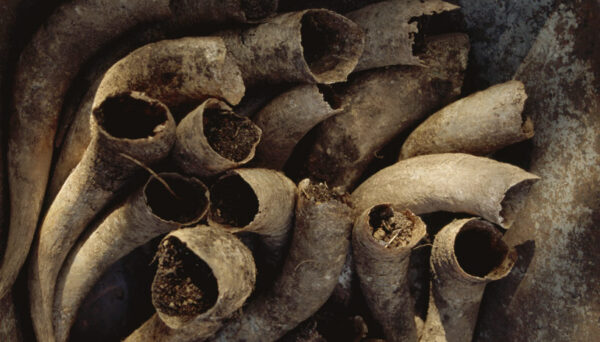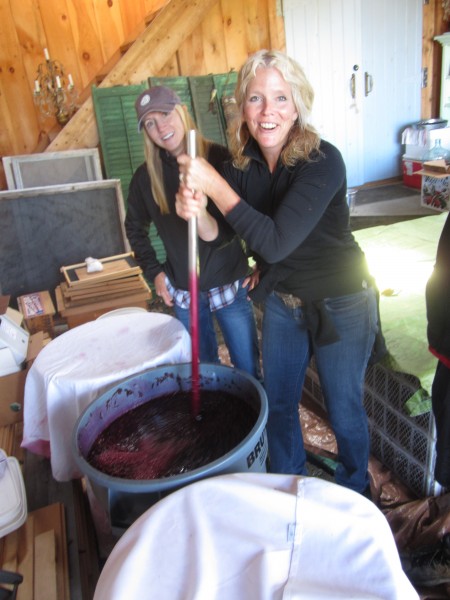
Glou-glou. Jaunty French slang for simple, fruity wine that’s so delightful to drink you scarcely give a thought to anything but the pleasure it gives. I think of glou-glou (pronounce it glue-glue) as red wine, although the distinction is hardly an important one. The term is pretty well current in English-speaking wine circles now, in part thanks to the influence of the late Joe Dressner, whose delight in lighter-bodied, high-acid, naturally-made wine gave a distinct twist to the importer’s portfolio.
At a recent Central Bottle tasting devoted to the genre we sipped the a fizzy little rosé of pinot noir from Austria, a sprightly gamay from the Côte Roannaise, and a juicy Bardolino – all very glou-glou. If you missed it, drop by and we’ll point you in the right direction.
Preparation 500. Biodynamics seems to have made more headway in grape farming than in almost any other branch of agriculture, but very few wine enthusiasts can tell you what it involves in terms of actual process. At the heart of the program are nine prescribed “preparations” — but the one that seems to be the starting point and most often spoken of is Preparation 500.
The recipe involves packing the horns of cows (not bulls, bro!) with manure and burying them in the ground at the time of the autumnal equinox. In the spring, the horns are exhumed and the now thoroughly composted manure is mixed with water, stirred (first in one direction, then the other), strained and sprayed on the surface of the vineyard at the rate of one horn;s worth for each hectare (two and a half acres).
The idea is to give the microbial life of the soil a boost, foster the development of humus, and encourage roots to go deep. It’s desirable for all the biodynamic preparations to be made on site, but Demeter, the largest organization certifying biodynamic practice permits it to be put up and purchased commercially.
For some, the proposition that such tiny amounts of organic matter could have a measurable effect on the health or fertility of soils casts doubt on the whole biodynamic premise. Others find it intuitively valid. The orthodox scientific community has yet to confirm any biodynamic claim.

Volatile acidity. Volatility refers to the tendency of a given substance to vaporize at room temperature. The main volatile acid in wine is acetic acid, which can occur in modest and inobtrusive amounts as a by-product of fermentation, but can be distracting and off-putting when generated in copious amounts by the bacteria known as acetobacters, the microbial agents intent on turning our wine into vinegar.
Wines with excessive volatile acidity (it’s often just called V.A.) can smell like something that belongs on the salad and not in your glass. In more extreme cases, like nail polish remover or even model airplane glue. Long considered a wine fault, volatile acidity is encountered with enough frequency in wines made in a self-consciously natural style that it’s beginning to be thought of less as a mistake than as an added point of interest or ‘complexing agent.’
The degree to which it can be tolerated varies from person to person. My toleration level ends when there’s enough V.A. present to become distracting – my new standard for deciding whether any detectable element in wine should be considered a fault.
Chaptalization. A method of raising the potential alcohol of wine grapes by adding cane, beet sugar, or concentrated, unfermented grape juice to the fermenting tank. The process takes its name from chemist Jean-Antoine Chaptal who invented the technique in the early 19th century and is widely practiced in Europe, especially in northern vineyards where adequate ripeness (and potential alcohol) has historically been more difficult to achieve.
EU rules permits “enrichment,” as it is generically called, in some designated geographic regions and forbids it in others. Italian wine law (which trumps the EU regulations on this point) bans the practice entirely. The gradual warming of vineyards seems to be making it somewhat less necessary than in the past (potential alcohol levels are rising naturally). Many winemakers in the naturalist camp avoid it on principle as an unwarranted manipulation.

Punching down/pumping over. In a vat of fermenting red wine the carbon dioxide tends to lift solids (grapeskins, stems, pips) to the surface forming a floating cap of solids. To promote aeration and the extraction of tannins and pigments winemakers want to keep the solids submerged.
They achieve this either by pushing the cap back down into the tank with a tool designed for the purpose (punching down), or by drawing wine from the bottom of the tank and spraying it over the cap (pumping over).
These operations are typically performed several times a day. You’ll frequently hear winemakers use the French terms for these practices: remontage for pumping over, pigeage for punching down.
Like Tom and Jerry or flotsam and jetsam the two are often confused – but the Wine Vocabulist rests easier in the knowledge that you, reader, now apprehend the difference.
Reach me at stephenmeuse@icloud.com